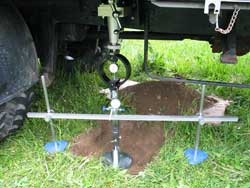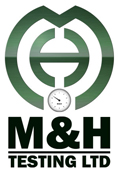CBR
All on site and laboratory testing carried out from temperature measurement to texture depth and from sample analysis to wheel tracking.

The CBR test is carried out to help in the design of new roads and carriageways.
The CBR test (Californian bearing ratio) is carried out on site with results available almost immediately.
In 1928 California division of highway developed method for pavement design. The majority of design curves developed later are based on the orignel curves proposed by O.J. Porter.
The California bearing ratio (CBR) is a penetration test for evaluation of the mechanical strength of road subgrades and basecourses. It was developed by the California Department of Transportation before World War II.
The test is performed by measuring the pressure required to penetrate a soil sample with a plunger of standard area. The measured pressure is then divided by the pressure required to achieve an equal penetration on a standard crushed rock material. The CBR test is described in ASTM Standards D1883-05 (for laboratory-prepared samples) and D4429 (for soils in place in field), and AASHTO T193. The CBR test is fully described in BS 1377 : Soils for civil engineering purposes : Part 4, Compaction related tests.
The CBR rating was developed for measuring the load-bearing capacity of soils used for building roads. The CBR can also be used for measuring the load-bearing capacity of unimproved airstrips or for soils under paved airstrips. The harder the surface, the higher the CBR rating. A CBR of 3 equates to tilled farmland, a CBR of 4.75 equates to turf or moist clay, while moist sand may have a CBR of 10. High quality crushed rock has a CBR over 80. The standard material for this test is crushed California limestone which has a value of 100.
Method
Using standard equipment, a plunger is pushed into the material with the force and penetration being measured.
From this information the CBR value is calculated and reported. With the material strength now established the design of road construction can begin.
Only material of less than 20mm in diameter can be tested using this method. For material greater than 20mm please see Plate Bearing or DCP Testing.
Reports normally e-mailed within 24 hours.
(Link to this website for more information)
CBR Test